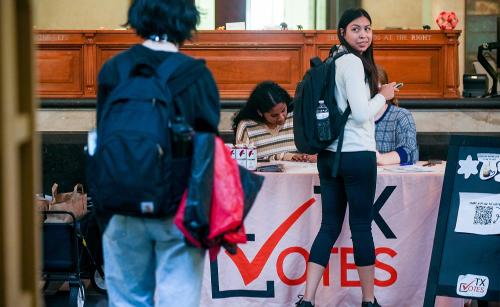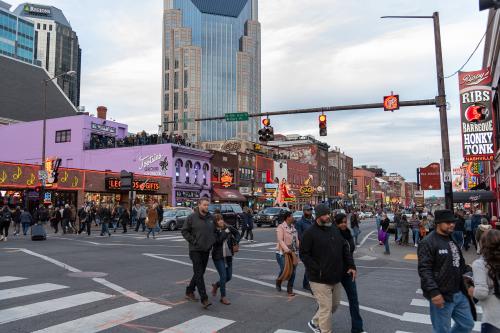Although the US Congress is back in session and immigration policy is a hotly debated issue, many believe that prospects of achieving an immigration reform bill are fading. This view is based on the sharp divide between those favouring “a pathway to citizenship” for the nation’s undocumented residents and those favouring more punitive “enforcement only” measures. In recent weeks, millions of activists, backing the former position, have marched in many US cities.
The immigration debate is unlikely to fizzle out before this session of Congress ends—and that is not due to the mass protests. Rather, immigration will continue to percolate because of recent demographic shifts in America and a new version of President Nixon’s old “silent majority”. In the late 1960s, Nixon played on the fears of so-called “middle Americans”, indignant at what they saw as the illegal and unpatriotic activities of young people and the counterculture in general, that opposed the Vietnam war. That stratagem and the demographic heft of the silent majority helped Nixon win two presidential elections.
The urgency that brought immigration reform to Congress now, after decades of inaction, is prompted by a similar “silent majority” backlash that has now reached a demographic tipping point.
The remarkable dispersion of the nation’s foreign-born, and particularly Hispanic, population to all regions and most cities of any size from coast to coast has, in short, injected the issue into state and congressional districts where it was not long ago irrelevant.
As recently as 1990, about three quarters of all immigrants, legal and illegal, resided in just six states and seven out of 10 Hispanics lived in California, New York, Texas or Florida. While many Americans were aware of the burgeoning immigrant population and new minorities, most only experienced immigrants “virtually” via television or news magazines rather than through personal interaction. Given their experience in assimilating waves of immigrants in the past, the foreign newcomers to these big, traditional “melting pot” states did not incite national political reactions.
That is no longer the case. The subsequent immigrant influx to the heartland and especially to more rural and agrarian states is noteworthy for two reasons: first, the growth rates are rapid: 25 states more than doubled and nine more than tripled their foreign-born population since 1990. In North Carolina, the foreign-born and Hispanic populations grew over 390 per cent and 540 per cent respectively over the past 15 years. Georgia’s and Colorado’s foreign born grew by over 200 per cent.
Second, while immigrants comprise smaller shares of the overall populations in these states than in the standard “melting pots”, their newcomers tend to be more recent immigrants, less well off financially and more likely to be undocumented than those in the bigger states. This combination of fast growth, questionable legal status and unfamiliar languages and customs has become fodder for anti-immigrant reactions, or at least concern.
An analysis of an August 2005 CBS News Poll found that 72 per cent of residents in the fastest-growing new destination states did not favour giving temporary work permits to illegal workers, compared with 54 per cent in the big immigrant states. On whether legal immigration should be changed, 57 per cent of the new destination state residents favoured reduced levels, compared with 47 per cent in the traditional immigrant destination states. The National Conference of State Legislatures found that in the first two months of this year, 368 bills relating to immigration, many of them punitive, were introduced in 42 states. The most recent, now law in Georgia, cracks down on public services to undocumented workers and employers who hire them.
With many of the new destination states also sending Republicans to Congress and the White House, immigration reform is certain to remain a frontline issue in the Republican-controlled Congress. It remains to be seen whether or not this “silent majority” of the vast heartland of new immigrant states will have the same clout as its Nixon-era counterpart, especially as now, it is pitted against an increasingly vocal minority of Hispanic and Asian workers and students taking to the streets. It is a good bet, however, that in the current Congressional session at least, their voices will not be silenced.



Commentary
Op-edThe Silence Behind the US’s Immigration Impasse
May 2, 2006